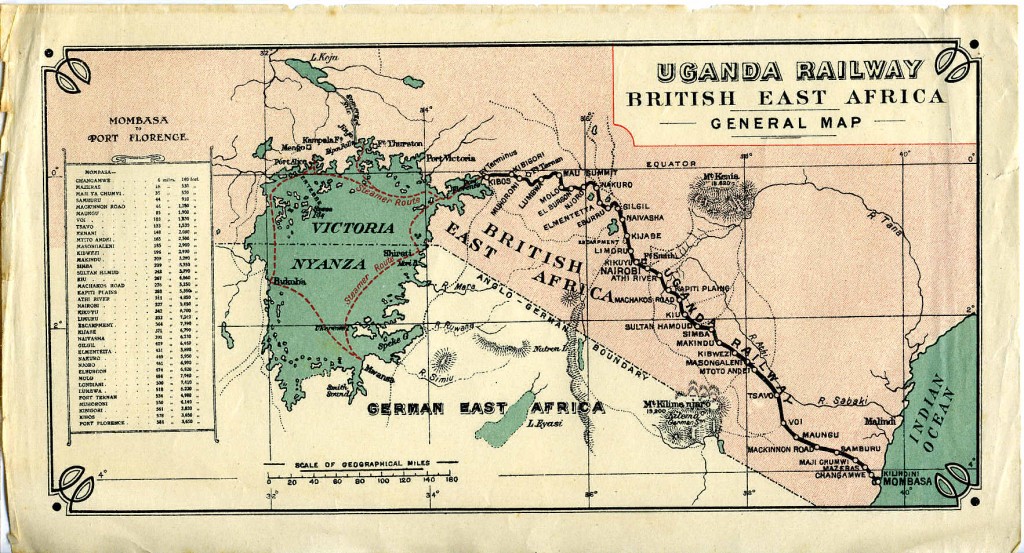
source: Mombasa-Victoria (Uganda) Railway and Busoga Railway, The Director of Surveys, Nairobi Government Printers, B.E.A (1913)
I’m very happy to announce that a paper that I co-authored with Casper Andersen and Laura Mann has been accepted for publication in the Transactions of the Institute of British Geographers:
Graham, M., Andersen, C., and Mann, L. 2015. Geographies of Connectivity in East Africa: Trains, Telecommunications, and Technological Teleologies. Transactions of the Institute of British Geographers (forthcoming).
The paper analyses and compares two transformative moments of technologically-mediated change in East Africa, the construction of the Uganda railway between Mombasa and Lake Victoria (1896-1903) and the introduction of fibre-optic cables that landed into the ports of Dar Es Salaam and Mombasa in 2009.
It uses discourse analysis to examine how technologically-mediated connectivity has been represented by political and economic actors during these transformative moments. In both cases, we explore the origins of the expectations of connectivity and the hope and fear associated with them.
Building on Massey’s notion of power-geometry and Sheppard’s concept of positionality the paper focuses on power relationships in discussions of connectivity and asks how people understand the abilities of transformative technologies to modify positionalities and alter relational distance and proximity. Ultimately, by examining historical and contemporary expectations of connectivity in East Africa, this paper allows us to work towards creating more grounded and historicised understandings of the coming-together of technology and connectivity.